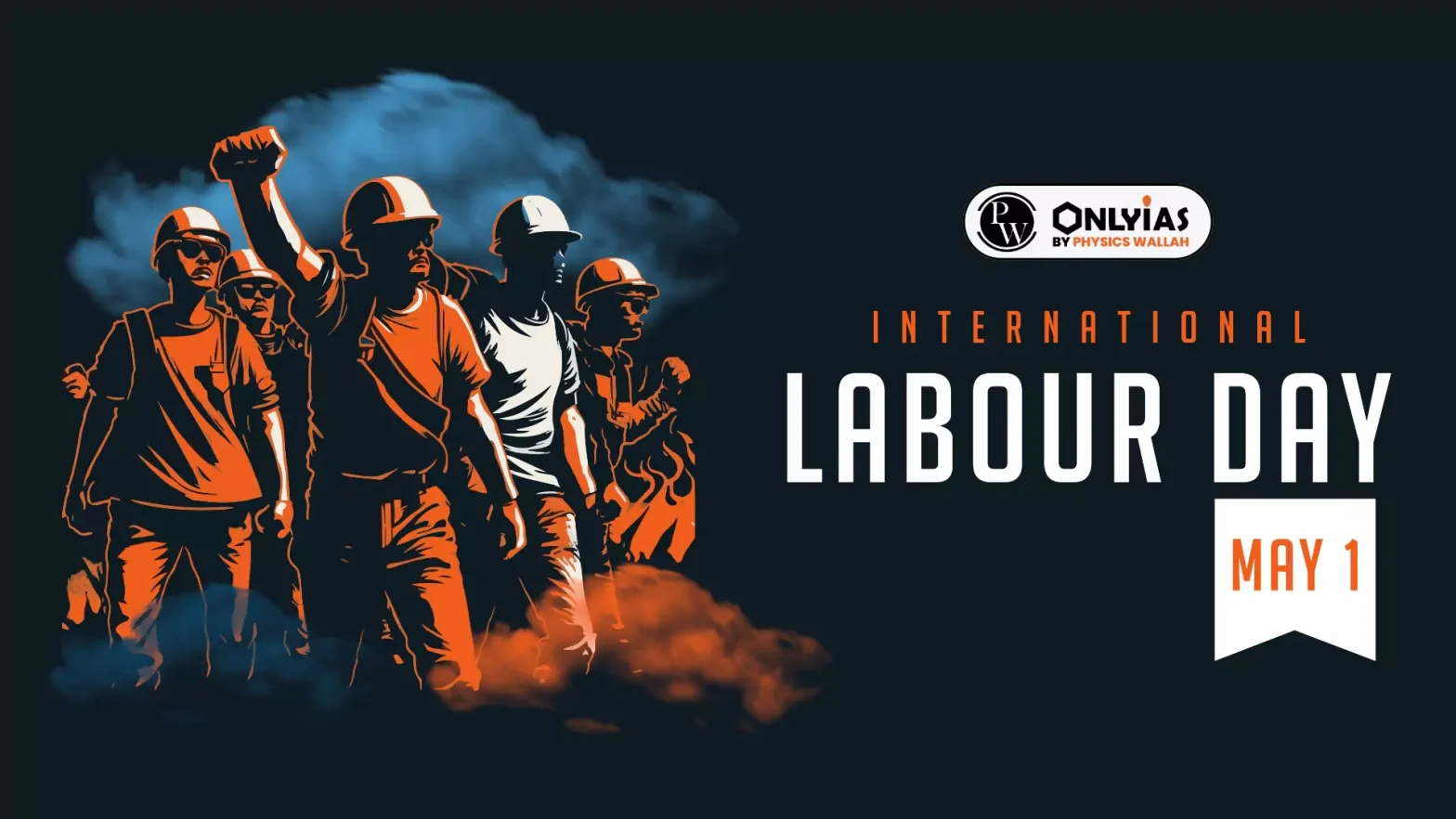International Labour Day 2025, also known as May Day or International Workers’ Day, was observed worldwide on Thursday, 1st May 2025. The day honoured the contributions and struggles of workers while raising awareness about labour rights, social justice, and fair working conditions.

International Labour Day 2025, also known as International Workers’ Day or May Day, will be celebrated worldwide on Thursday, 1st May 2025. This special day is dedicated to recognising the immense contributions of workers and raising awareness about labour rights and fair working conditions. Aspiring UPSC candidates or those interested must read on to understand the significance of International Labour Day 2025 offers insights into labour movements, social justice, and government initiatives promoting worker welfare.
International Labour Day 2025 will be celebrated worldwide on Thursday, 1st May 2025. Dedicated to recognising the efforts, sacrifices, and achievements of the global workforce, this day serves as a powerful reminder of the historic struggles that shaped the rights and protections workers enjoy today. Observed in over 80 countries as a public holiday, International Labour Day 2025 will be celebrated by conducting rallies, seminars, awareness campaigns, and cultural programs aimed at promoting labour rights, fair work practices, and social justice.
| International Labour Day 2025 Overview | |
| Factor | Details |
| Also Known As | International Labour Day / International Workers’ Day / May Day |
| Date in 2025 | Thursday, 1 May 2025 |
| First Observed | 1 May 1889 (globally recognised after the 1886 Haymarket Affair in Chicago) |
| Purpose | To honour workers, celebrate their contributions, and advocate for fair labour practices |
| Origins | Rooted in the 19th-century labour movement for the eight-hour workday |
| Global Reach | Public holidays in over 80 countries (India, France, Russia, China, Germany, etc.) |
| Celebration Styles | Rallies, parades, speeches, seminars, cultural gatherings, and spring festivals |
| Theme | Yet to be announced |
| Exceptions | USA and Canada celebrate “Labour Day” in September |
The International Labour Day Theme 2025 has not been officially announced yet. Every year, the theme reflects persisting labour issues like digital employment, worker safety, social protection, and equality. Once released, the International Labour Day Theme 2025 will inspire campaigns, seminars, and educational programs worldwide. The International Labour Organisation (ILO) usually suggests the theme to spotlight the challenges and opportunities within the world of work.
Understanding the International Labour Day history is key to learning why the day is still relevant. It sheds light on the historic struggles for better working conditions and workers’ rights.
The International Labour Day history is rooted in the labour movement in the United States. On May 1, 1886, thousands of workers initiated a nationwide strike demanding an eight-hour workday. The protest in Chicago’s Haymarket Square turned violent, leading to deaths and widespread attention to labour issues. In 1889, the Second International declared May 1st as International Labour Day to honour these workers’ sacrifices.
In India, Labour Day was first celebrated in 1923 in Chennai under the leadership of Comrade Singaravelu Chettiar. The day not only symbolizes worker struggles but also represents the spirit of unity and collective action for labour welfare worldwide.
Labour laws in India form the foundation for protecting workers’ rights and promoting safe, fair workplaces. This section covers the evolution and current structure of labour laws.
Labour laws in India have evolved considerably to adapt to economic changes and workforce diversity. The Indian Constitution supports labour rights through the Directive Principles of State Policy. Major labour reforms consolidated 29 existing laws into four new codes:
These codes regulate wages, working hours, safety norms, industrial relations, and benefits like Provident Fund (PF) and Employee State Insurance (ESI). International Labour Day 2025 is an apt time to reflect on the progress and gaps in implementing these reforms to safeguard worker rights.
Labour rights in India aim to ensure dignity, equality, and security for every worker. Labour rights in India are guaranteed through constitutional articles and labour legislation. Key constitutional provisions include:
India is also a signatory to important ILO Conventions such as:
Key labour rights in India include:
However, about 90% of India’s workforce is in the informal sector, where access to these rights remains limited. Government initiatives like the e-Shram Portal, PM Shram Yogi Maandhan, and MGNREGA are significant steps towards ensuring protections for unorganised workers.
Labour Day 2025 symbolises workers’ struggles, achievements, and ongoing challenges. The significance of International Labour Day 2025 can be understood through the following points:
In India, parades, speeches by trade union leaders, and cultural activities will mark the celebration of Labour Day 2025, raising awareness about worker welfare and the need for stronger implementation of labour laws.
International Labour Day 2025 is not just a historical remembrance but a contemporary call to action. It encourages societies to value the dignity of labour, recognise the rights and contributions of workers, and ensure that development benefits everyone equitably. As we move towards an era of digital transformation and rapid economic change, safeguarding labour rights in India and across the globe becomes more critical than ever.
Ready to boost your UPSC 2025 preparation? Join PW’s UPSC online courses today!
Labour Day 2025 recognises the achievements and struggles of workers globally, promoting fair labour practices and worker dignity.
The International Labour Day theme 2025 has not been officially released yet, but it is likely to focus on modern workforce challenges, highlighting workers’ rights amid changing global labour markets.
The International Labour Day history traces back to the 1886 Haymarket Affair in Chicago, demanding fair working hours and better labour conditions.
Labour laws in India have been reformed into four major labour codes to simplify, strengthen, and modernise labour rights and employer regulations.
Key Labour rights in India include the right to equal pay, safe work conditions, protection from child labour, and social security benefits.
Labour Day 2025 will be celebrated with rallies, speeches, cultural events, and campaigns emphasising worker rights and international labour solidarity.
<div class="new-fform">
</div>
